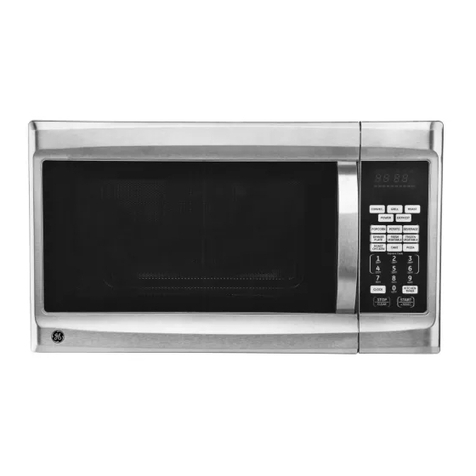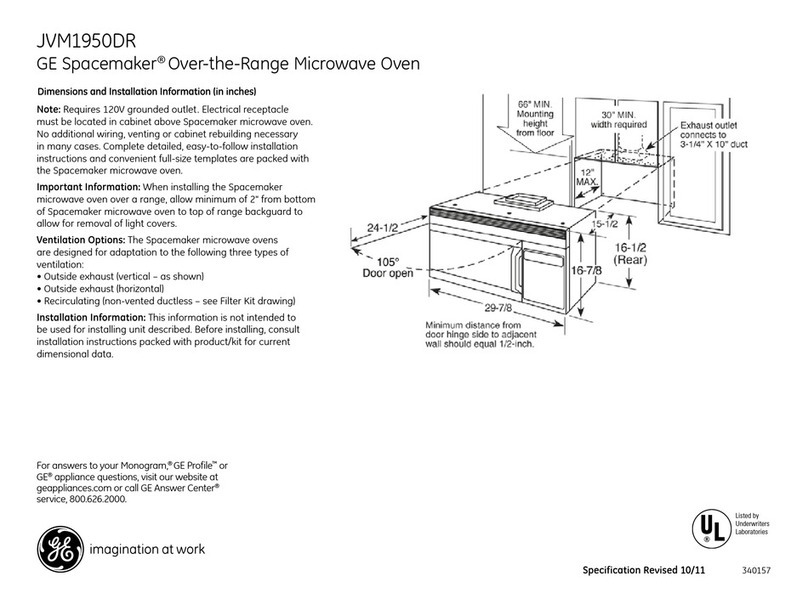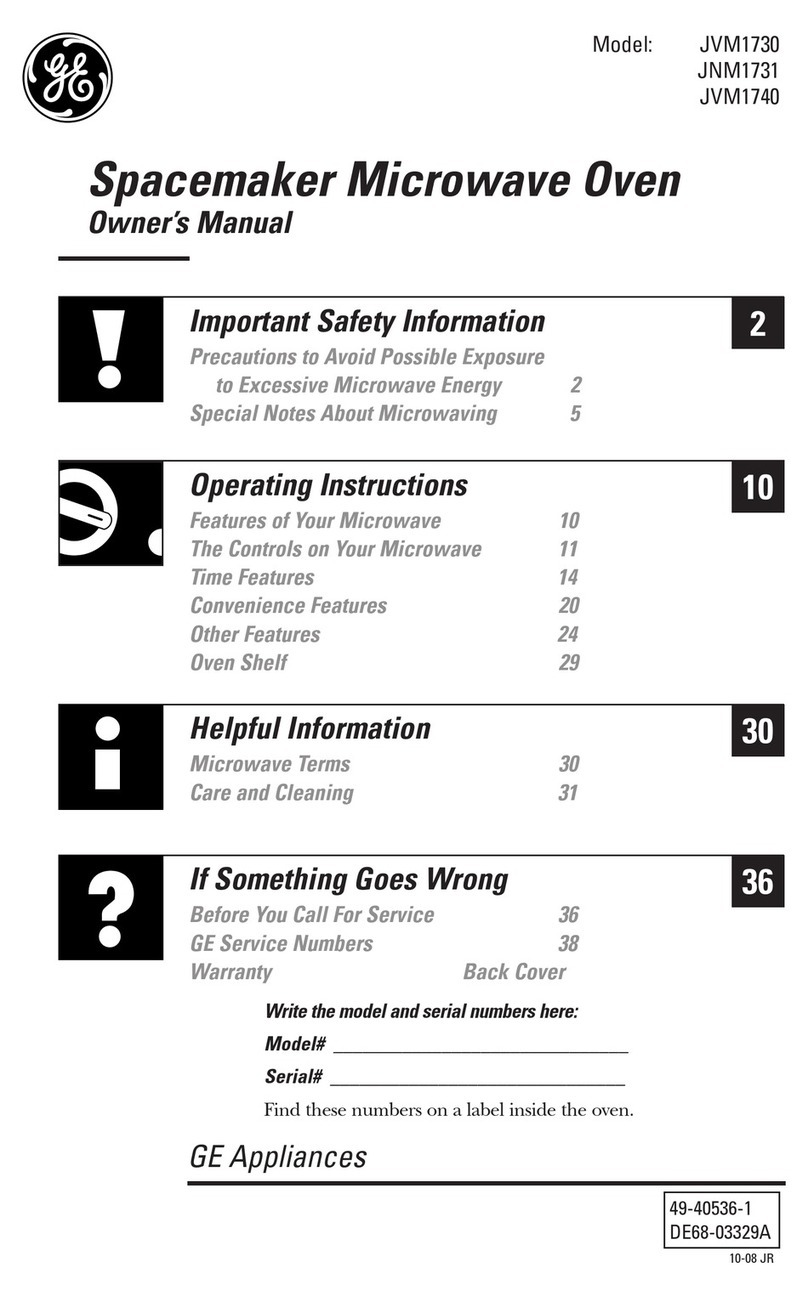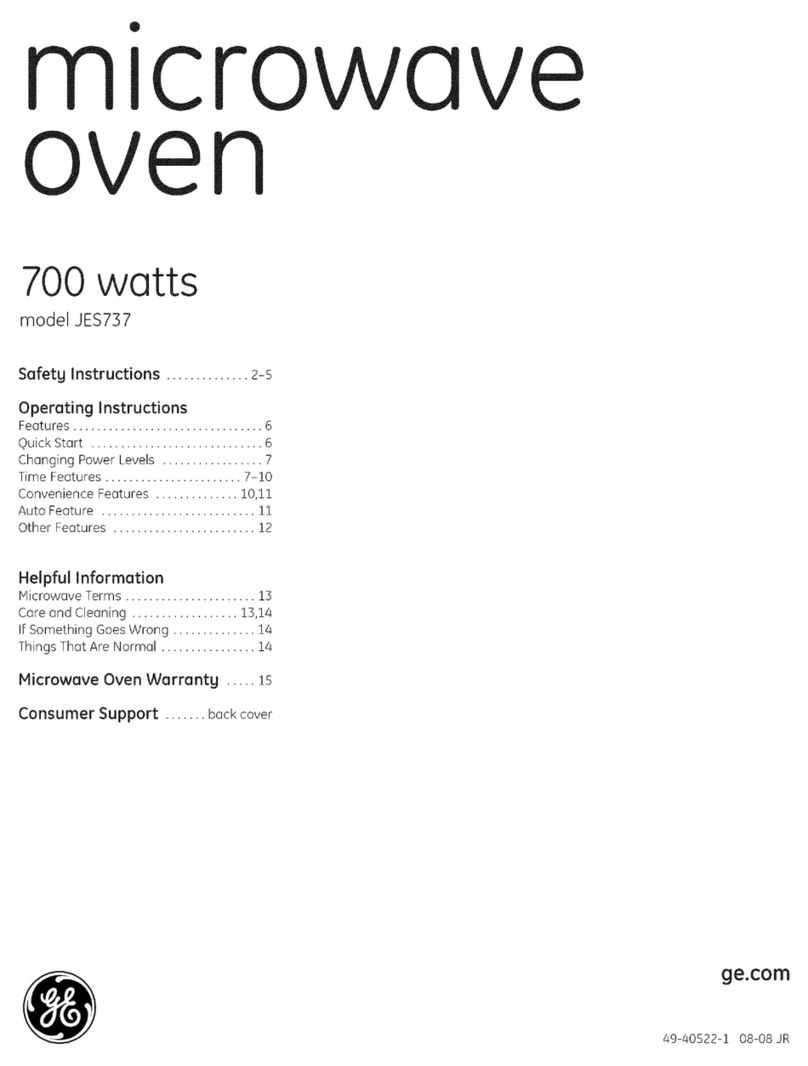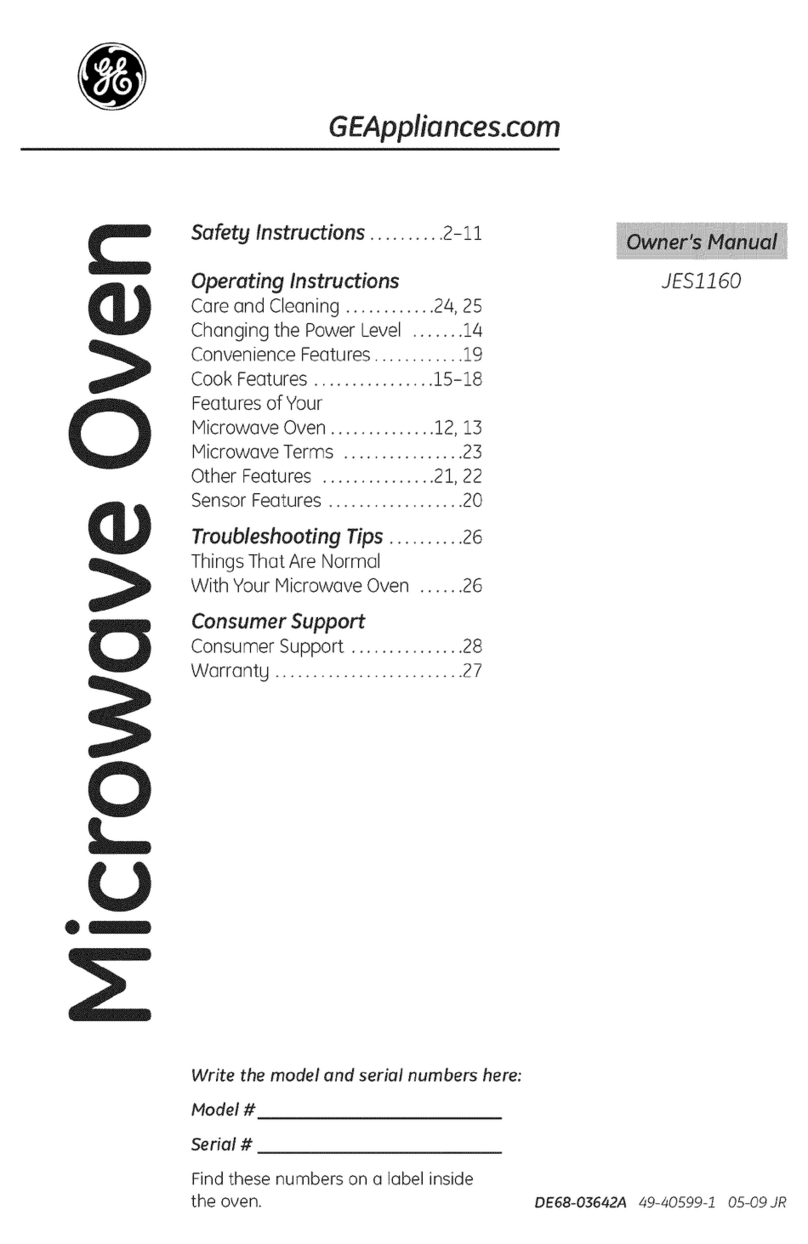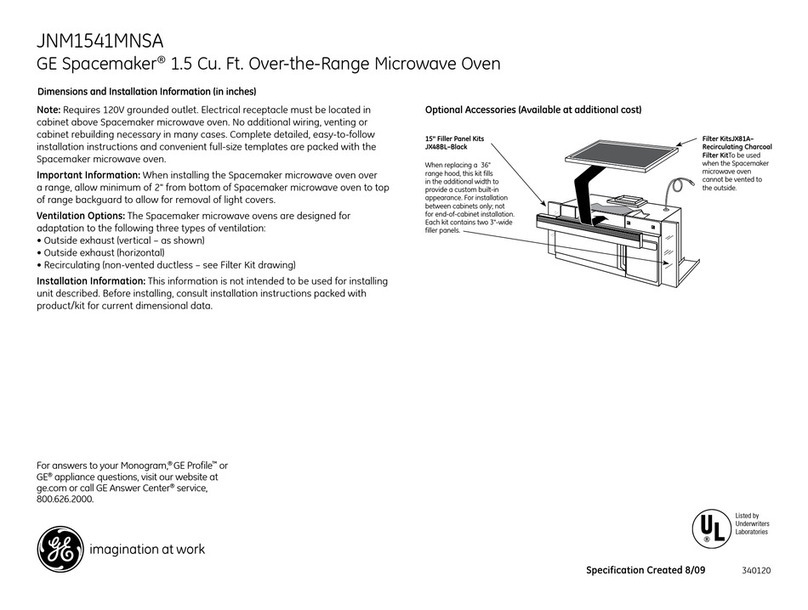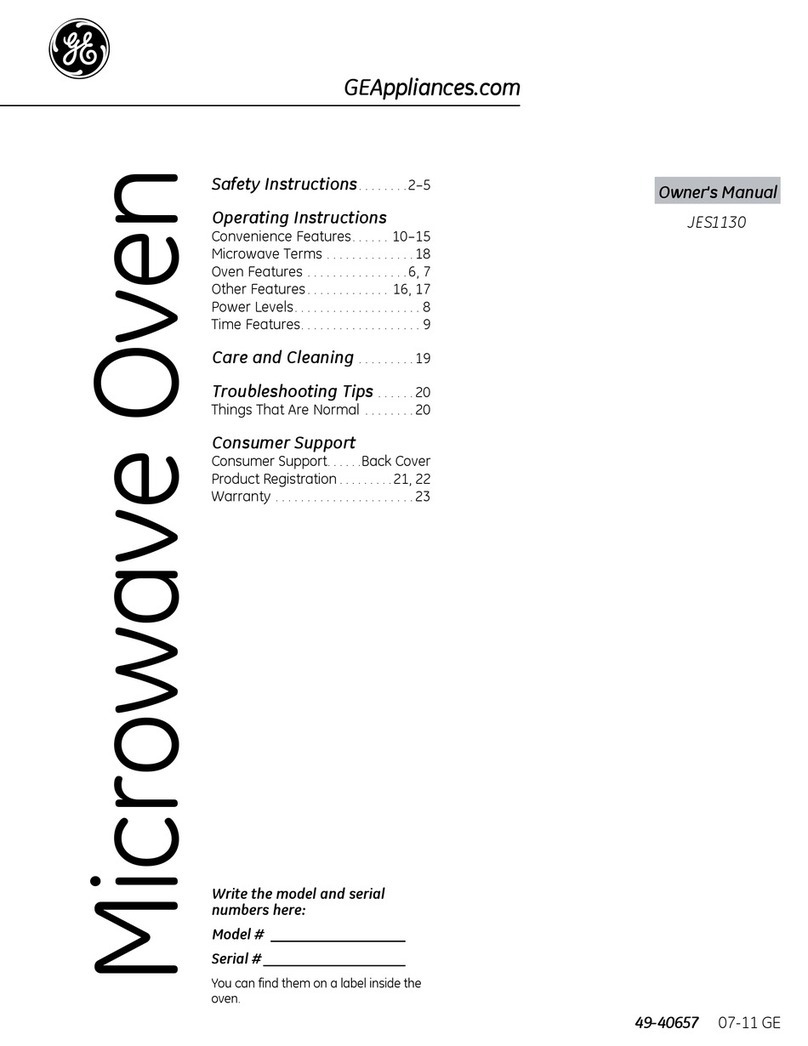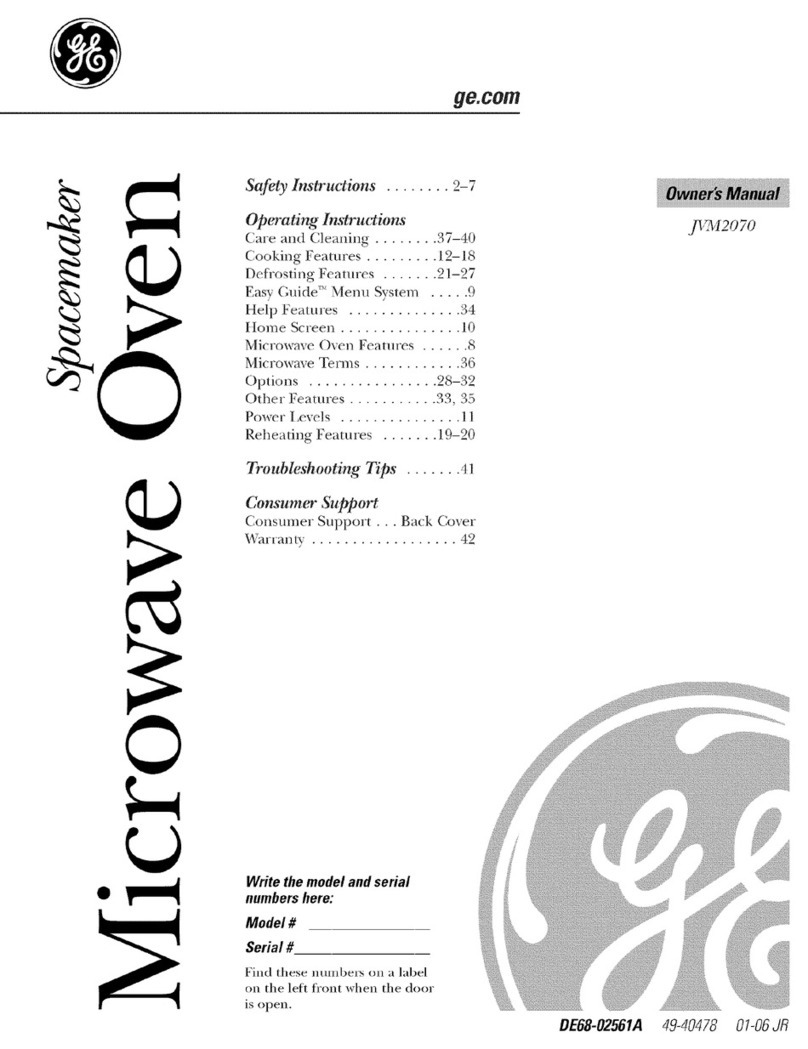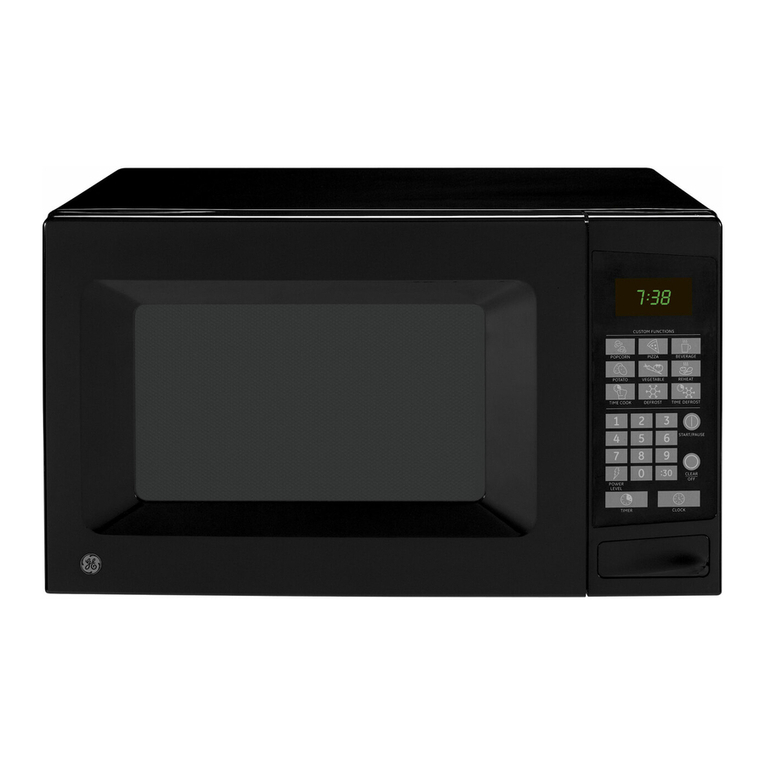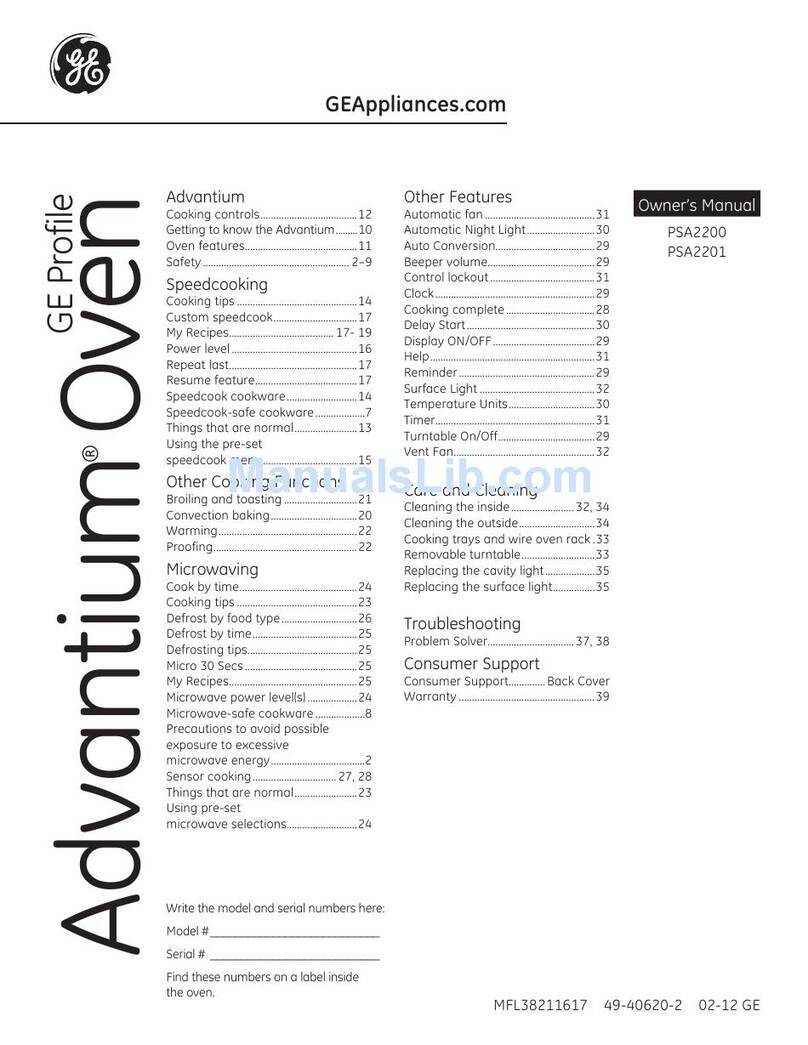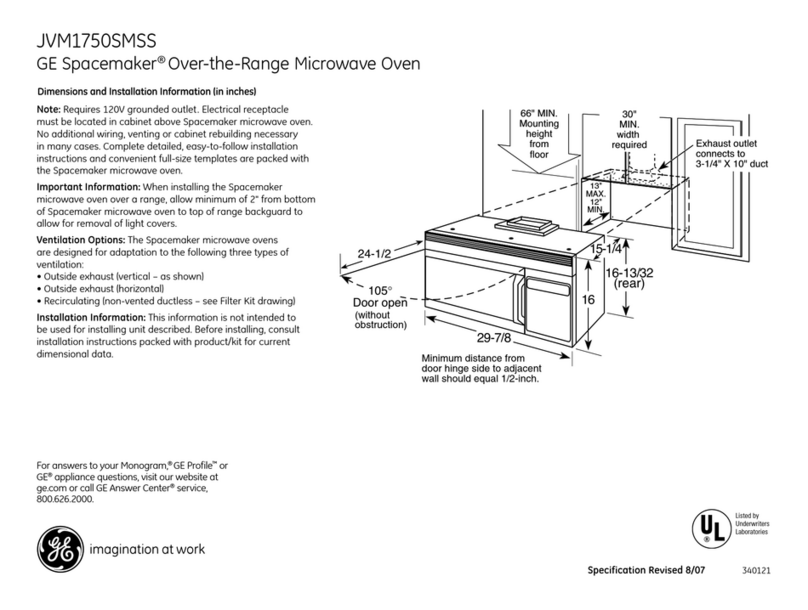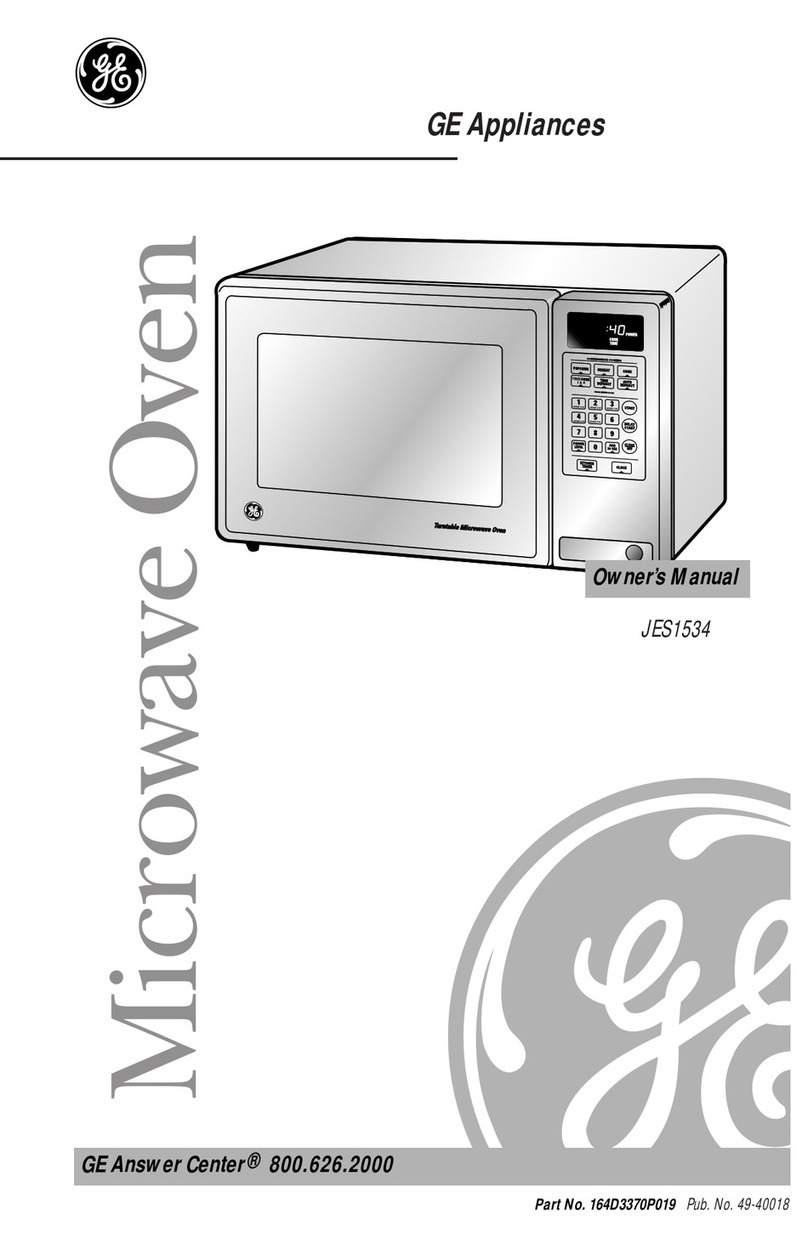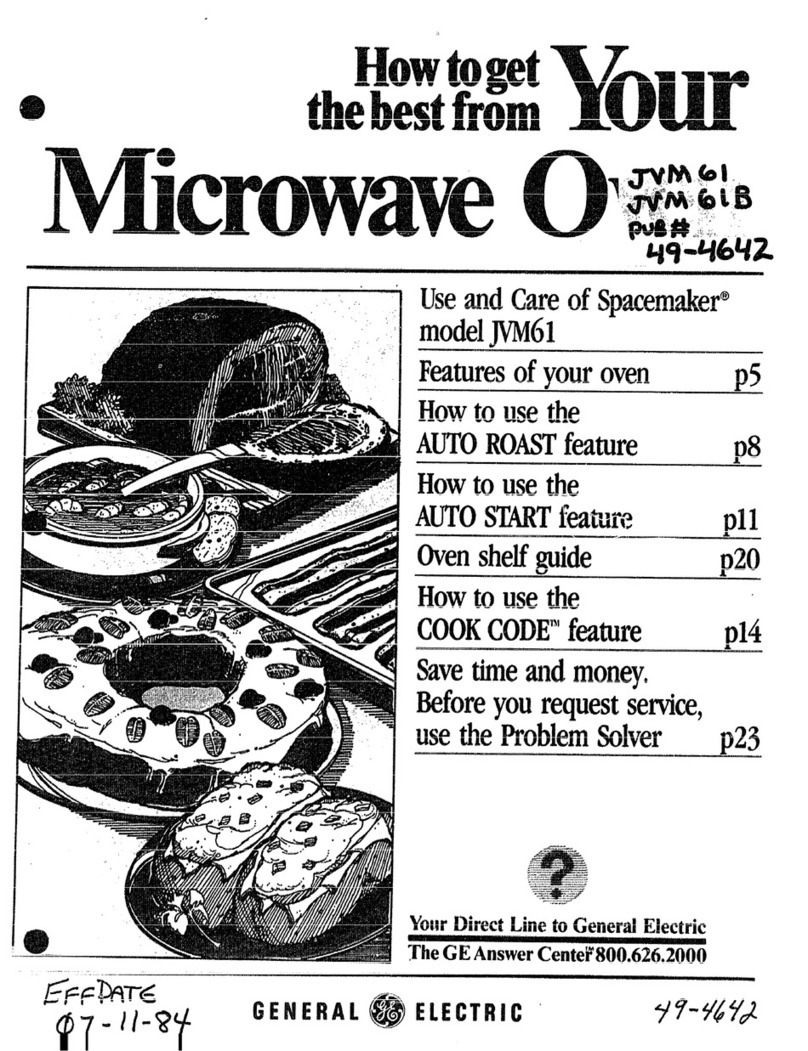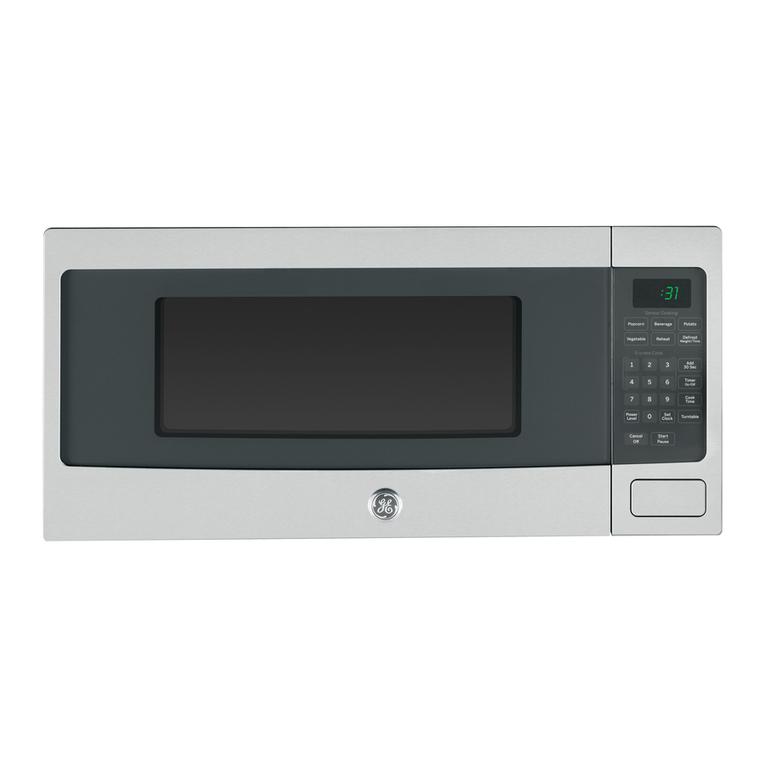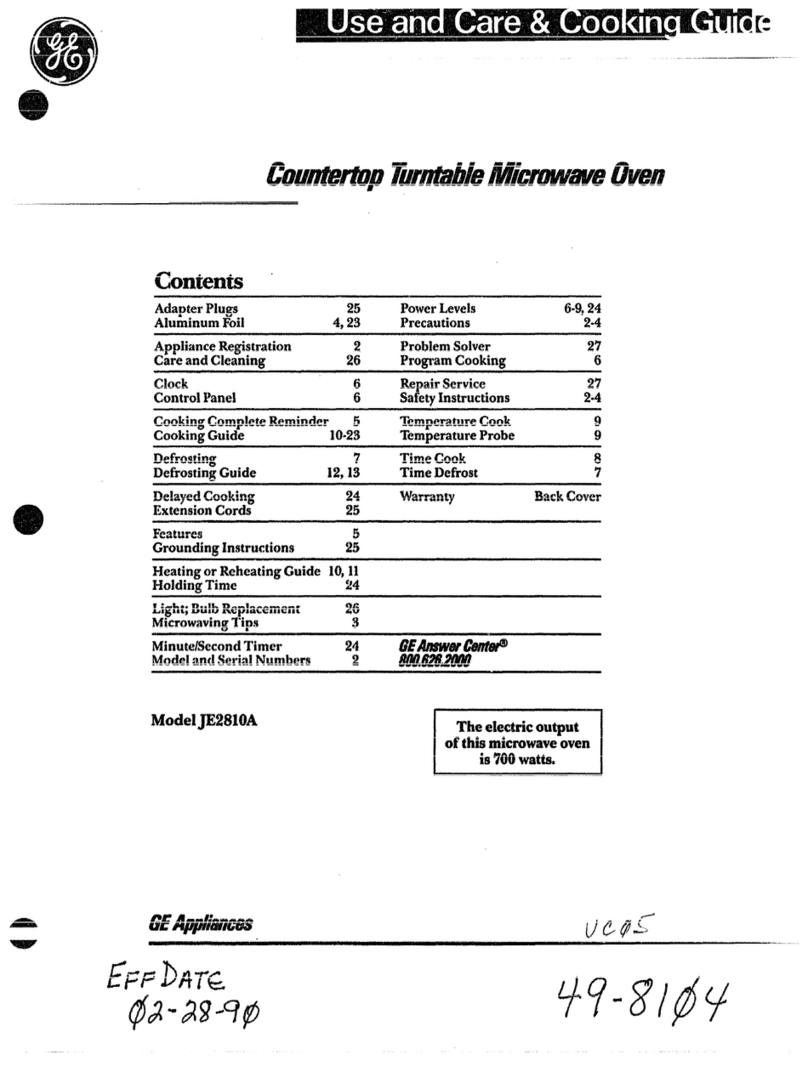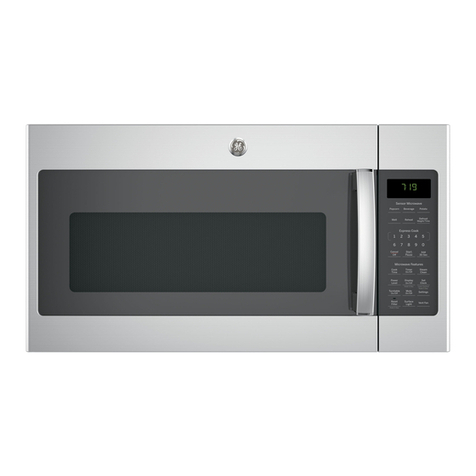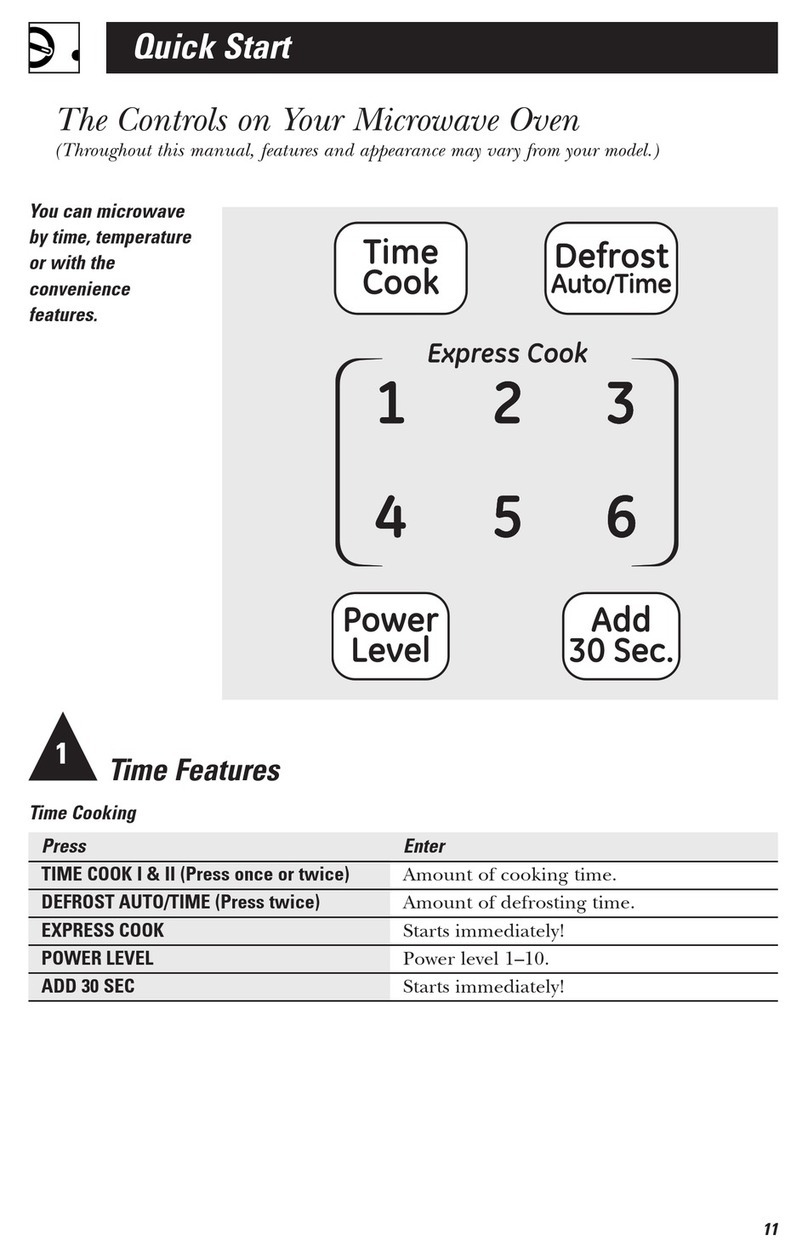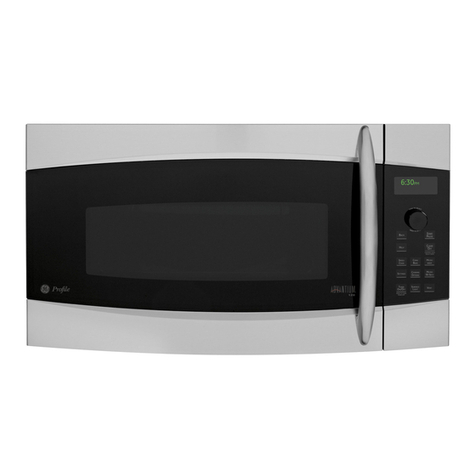• Operating the microwave with no food inside
for more than a minute or two may cause
damage to the oven and could start a fire.
It increases the heat around the magnetron
and can shorten the life of the oven.
• Hot foods and steam can cause burns.
Be careful when opening any containers of
hot food, including popcorn bags, cooking
pouches and boxes. To prevent possible
injury, direct steam away from hands and face.
• Foods with unbroken outer ‘‘skin’’ such as
potatoes, sausages, tomatoes, apples, chicken
livers and other giblets and egg yolks should
be pierced to allow steam to escape during
cooking.
• Do not overcook potatoes. They could
dehydrate and catch fire, causing damage
to your oven.
• Some products such as whole eggs and
sealed containers—for example, closed jars—
are able to explode and should not be heated
in this microwave oven. Such use of the
microwave oven could result in injury.
• Do not boil eggs in a microwave oven.
Pressure will build up inside egg yolk and will
cause it to burst, possibly resulting in injury.
• Avoid heating baby food in glass jars, even
with the lid off. Make sure all infant food is
thoroughly cooked. Stir food to distribute
the heat evenly. Be careful to prevent
scalding when warming formula. The
container may feel cooler than the formula
really is. Always test the formula before
feeding the baby.
• Do not defrost frozen beverages in narrow-
necked bottles (especially carbonated
beverages). Even if the container is opened,
pressure can build up. This can cause the
container to burst, possibly resulting in injury.
SAFETY FACT—Superheated water.
Liquids, such as water, coffee or tea, are able
to be overheated beyond the boiling point
without appearing to be boiling. Visible
bubbling or boiling when the container is
removed from the microwave oven is not
always present. THIS COULD RESULT IN
VERY HOT LIQUIDS SUDDENLY BOILING
OVER WHEN THE CONTAINER IS
DISTURBED OR A SPOON OR OTHER
UTENSIL IS INSERTED INTO THE LIQUID.
To reduce the risk of injury to persons:
– Do not overheat the liquid.
– Stir the liquid both before and halfway
through heating it.
– Do not use straight-sided containers with
narrow necks.
– After heating, allow the container to stand
in the microwave oven for a short time
before removing the container.
– Use extreme care when inserting a spoon or
other utensil into the container.
• Cook meat and poultry thoroughly—meat to
at least an INTERNAL temperature of 160°F
and poultry to at least an INTERNAL
temperature of 180°F. Cooking to these
temperatures usually protects against
foodborne illness.
• Do not pop popcorn in your microwave oven
unless it is in a special microwave popcorn
accessory or unless you use popcorn labeled
for use in microwave ovens.
5
FOODS
ARCING
If you see arcing, press the CLEAR/OFF pad
and correct the problem.
Arcing is the microwave term for sparks in the
oven. Arcing is caused by:
• Metal or foil touching the side of the oven.
• Foil not molded to food (upturned edges act
like antennas).
• Metal, such as twist-ties, poultry pins or
gold-rimmed dishes in the microwave.
• Recycled paper towels containing small metal
pieces being used in the microwave.

